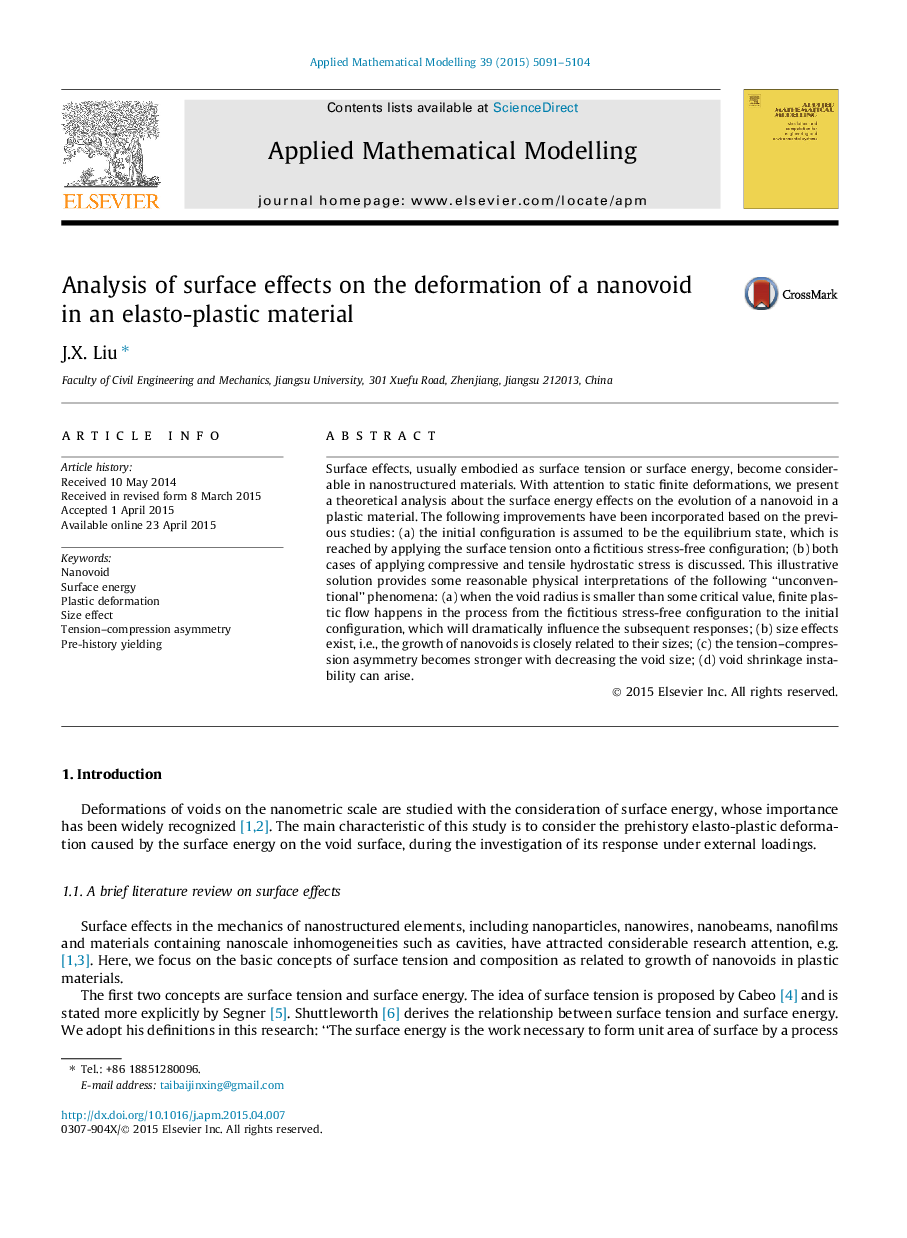| Article ID | Journal | Published Year | Pages | File Type |
|---|---|---|---|---|
| 1703286 | Applied Mathematical Modelling | 2015 | 14 Pages |
Surface effects, usually embodied as surface tension or surface energy, become considerable in nanostructured materials. With attention to static finite deformations, we present a theoretical analysis about the surface energy effects on the evolution of a nanovoid in a plastic material. The following improvements have been incorporated based on the previous studies: (a) the initial configuration is assumed to be the equilibrium state, which is reached by applying the surface tension onto a fictitious stress-free configuration; (b) both cases of applying compressive and tensile hydrostatic stress is discussed. This illustrative solution provides some reasonable physical interpretations of the following “unconventional” phenomena: (a) when the void radius is smaller than some critical value, finite plastic flow happens in the process from the fictitious stress-free configuration to the initial configuration, which will dramatically influence the subsequent responses; (b) size effects exist, i.e., the growth of nanovoids is closely related to their sizes; (c) the tension–compression asymmetry becomes stronger with decreasing the void size; (d) void shrinkage instability can arise.
